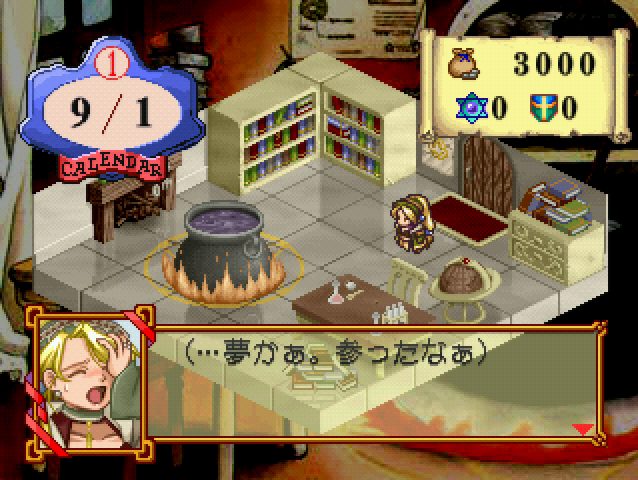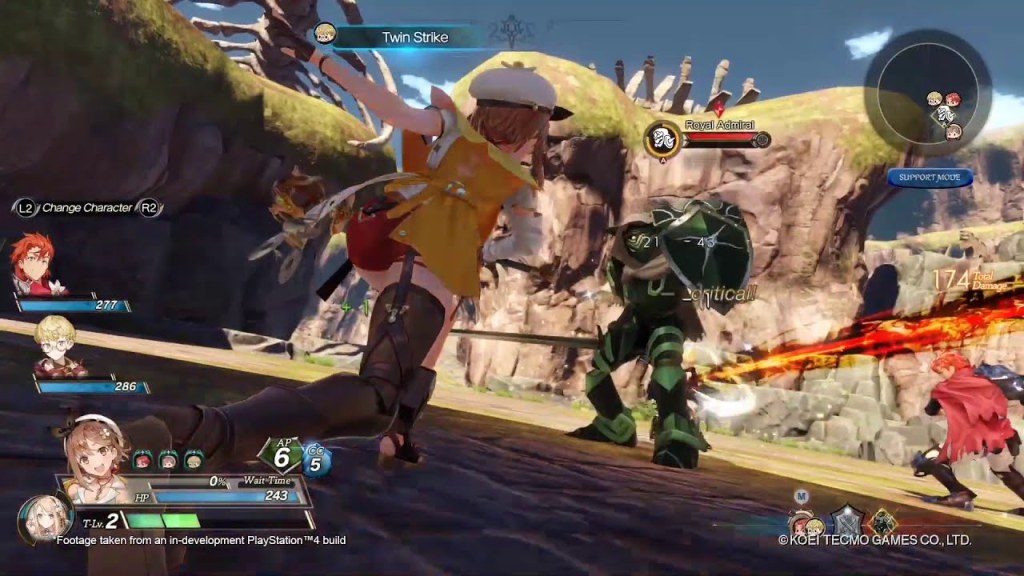The Atelier series of games began over 20 years ago, with the first game in the series, Atelier Marie: The Alchemist of Salburg, releasing all the way back in 1997 for the Sony PlayStation. An “atelier” is a workshop or studio, and this title is definitely reflected in the series, which have a heavy focus on alchemy, collection and creation of items. Thanks to their cute characters and unique gameplay, Atelier games have gained quite a cult following over the last couple of decades.

Developed by Gust, a division of Koei Tecmo, there are now 22 games in the main series, and numerous spin-offs, remakes and ports. And yet, this is the first time I’ve ever played an Atelier game. What have I been doing wasting my life without these games!? Well weep for me no longer, because I have finally seen the light, and experienced the sweet charm that is cute girls doing alchemy with Atelier Ryza 2: Lost Legends & the Secret Fairy for Nintendo Switch and Sony PlayStation PS4/PS5.
A direct sequel to Atelier Ryza: Ever Darkness & the Secret Hideout, the game centres around the peppy and spirited Reisalin “T̶h̶i̶g̶h̶z̶a̶ Ryza” Stout: a budding alchemist, teacher, and a friend to absolutely everyone she encounters. In typical JRPG fashion you control Ryza as the main character, and recruit several party members during progression of the game’s story, many of whom are characters from the previous game. Despite not having played the original game, I still managed to gain a decent understanding of who all the characters were and what they meant to Ryza and the game’s story. If possible I would recommend to play the original game first, but if you’re in my situation, I don’t think it detracts much from your overall enjoyment of the game.

Gameplay is fairly straight-forward: collect items for alchemy from different areas of the map, take them back to your Atelier and use them to craft various items. The more you are able to craft, the more areas of the map you can explore, the more efficient you can become in combat, and the further you can progress the main story and side missions. It’s a very simple concept but incredibly satisfying – coming across that rare item out in the field and bringing it back to be thrown in the cauldron to create something completely different becomes very addicting. There’s also quite a bit of skill needed to synthesise high-quality or complex items, as each ingredient has a particular level of quality and various skills that might be transferred to the synthesised item. This is an essential gameplay mechanic, and certainly enhances other aspects of gameplay such as exploration and combat.

So the game is completely peaceful, right? No fighting, just strolling around picking flowers and creating items to gift to townspeople?
Wrong. Ryza LOVES to fight.
Adorable sheep, sludgy slimes, rare dragons, immortal suits of armour, Ryza slaughters them all with ease to collect their contents and throw them into the boiling alchemy pot. This is done with the assistance of two other active party members, and another party member that can swap in during combat. You have the option to swap between characters and perform attacks, blocks, special skills, and use items to defeat the helpless creatures. Combat also utilises an “active time battle” system, which makes fighting much more engaging than traditional turn-based JRPG battles. Performing particular skills at the request of your allies will trigger your party’s skills and cause a chain of attacks for massive damage. It’s quite satisfying when a single attack ends up becoming a barrage from all of your characters at once. This means most of the time combat will be an absolute breeze and you won’t even have to consider your actions, but scattered throughout the world and as you progress the story are various bosses, and these can be a bit more of a challenge.

It’s not all about crafting and killing though, as a large component of the game involves exploring ruins, unravelling mysteries, and revealing the truth around a mysterious character who hatched from an egg known as Fi (no, not the talking sword). These essentially acts as “dungeons”: separate areas with a unique visual style, specific enemies to fight and items to collect, and a boss at the end. While exploring the ruins, fighting enemies, and using various crafted items, your goal is to piece together fragments of each area and discover the history of the location through snippets of text. Ryza is also in possession of a magical compass that guides her towards points of interest in each location. How convenient! Overall I found collecting and piecing together these fragments to be a little bit tedious, but the reward is worth the hassle as it allows you to gain points needed to synthesise new items. Exploring these ruins is not an optional part of the game, and is required in order to progress the main story.

In addition to the main story there is plenty of extra content to keep you hooked on Atelier Ryza. Numerous side quests involving the game’s main characters and townspeople, levelling up the shops located in the town, unlocking new parts of the skill tree, upgrading weapons at the local blacksmith, and befriending and sending out an adorable Puni (slime) on missions to collect alchemy items. There’s even a screenshot mode where you can pose Ryza, other characters and enemies and take some amusing shots (pictured below) – an essential part of any modern video game! I had a thrilling time with all these optional parts of the game, and they definitely add much more gameplay value than just powering through the ruins and main story.

With a crisp anime art-style, 4K resolution on the PS5, vibrant colours and lighting, and detailed character models, Atelier Ryza is one of the best-looking JRPGs I’ve seen yet. Some of the environmental models can look a bit jagged up close, and animations during character interactions are noticeably robotic, but overall it’s a very visually-pleasing game. Combine that with a brilliant acoustic score from composer Kazuki Yanagawa, who has composed music for almost all the main Atelier games, and you’ve got an incredibly charming aesthetic for the game. His music has a refreshing, calm, folky sound with plenty of acoustic instruments and catchy melodies, and the occasional intense upbeat song during the game’s combat and boss fights – it’s a perfect fit for the series.
After playing Atelier Ryza 2: Lost Legends & the Secret Fairy on PlayStation 5, I’m intrigued by the rest of the series and will certainly be playing some of the earlier titles for more alchemical action. And if you’re like me and have never played an Atelier game before, don’t hesitate to try out Ryza 2, even with it being a direct sequel.
So why should I play it?
- You enjoy JRPGs, particularly those with a focus on collecting/crafting.
- You’re an anime fan and enjoy series with cute characters.
- You’ve never played a game in the Atelier series.
- You want a decent JRPG to play on the PS5.
But why shouldn’t I play it?
- You don’t enjoy games with a focus on collecting/crafting.
- Cute anime girls might make you embarrassed.
- If you don’t have the time to commit hours to a lengthy JRPG.
A review copy of the game for PlayStation 5 was provided for the purpose of this review.
You can read more of our reviews HERE or over over at Gaming News Australia.




